If Ultrasound Due Date Is 3 Weeks Earlier Than Edd When Did Your Baby Come
Due Date by Ultrasound Calculator
Week 1
At 1 week pregnant, you're actually not pregnant yet. As your pregnancy is calculated from the first day of your last menstruation, your baby does not yet exist, and your body is preparing for the ovulation during which you'll get pregnant.
Week 2
At 2 weeks pregnant, you're technically not pregnant yet. Right now there is a lone egg and a whole bunch of anxious sperm eager to fertilize the egg. Your uterus and the entire body are preparing for a big day of ovulation - the stage when you'll get pregnant.
Week 3
Week 3 of pregnancy is the week when the implantation happens. Your body releases chorionic gonadotropin (hCG), which causes an increased production of estrogen and progesterone, and prevents new eggs in the ovaries from ripening. Very soon you'll start experiencing the first symptoms of pregnancy: missed period, nausea, breast changes.
Week 4
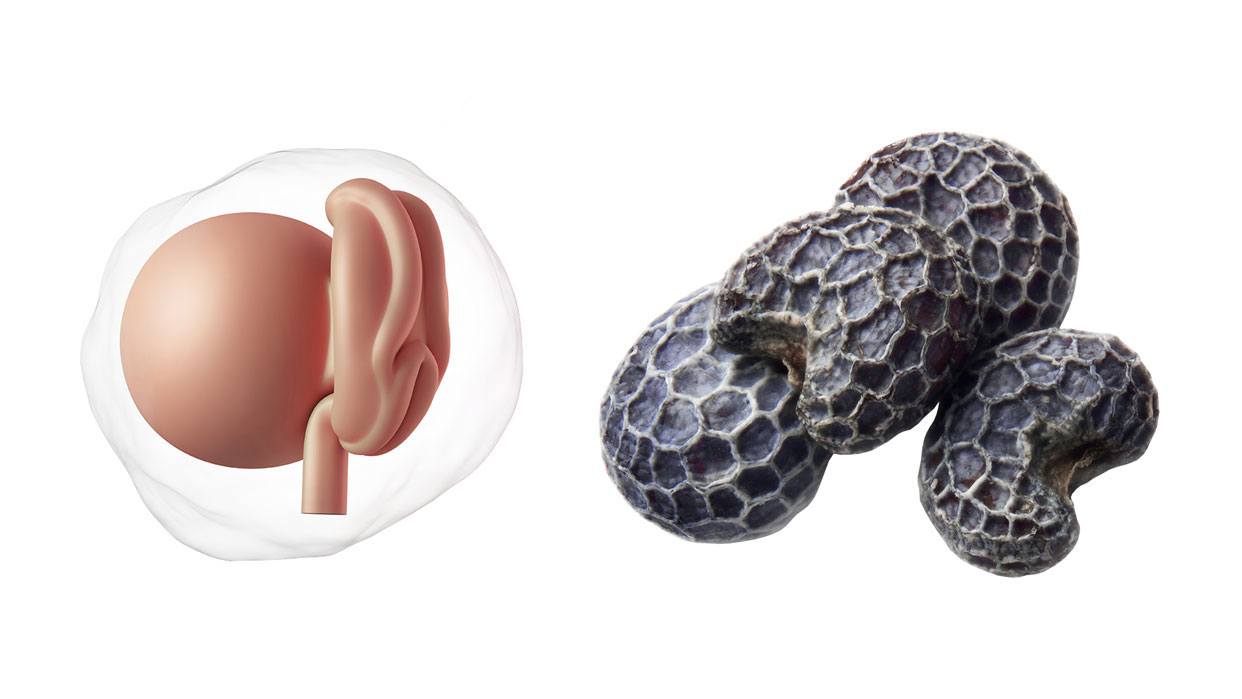
At 4 weeks pregnant, your baby is the size of a poppy seed.
At 4 weeks pregnant, your baby future baby has finally found his home for the next eight months.The blastocyst has arrived from a fallopian tube to your uterus. You can get a positive pregnancy test result at this stage.
Week 5
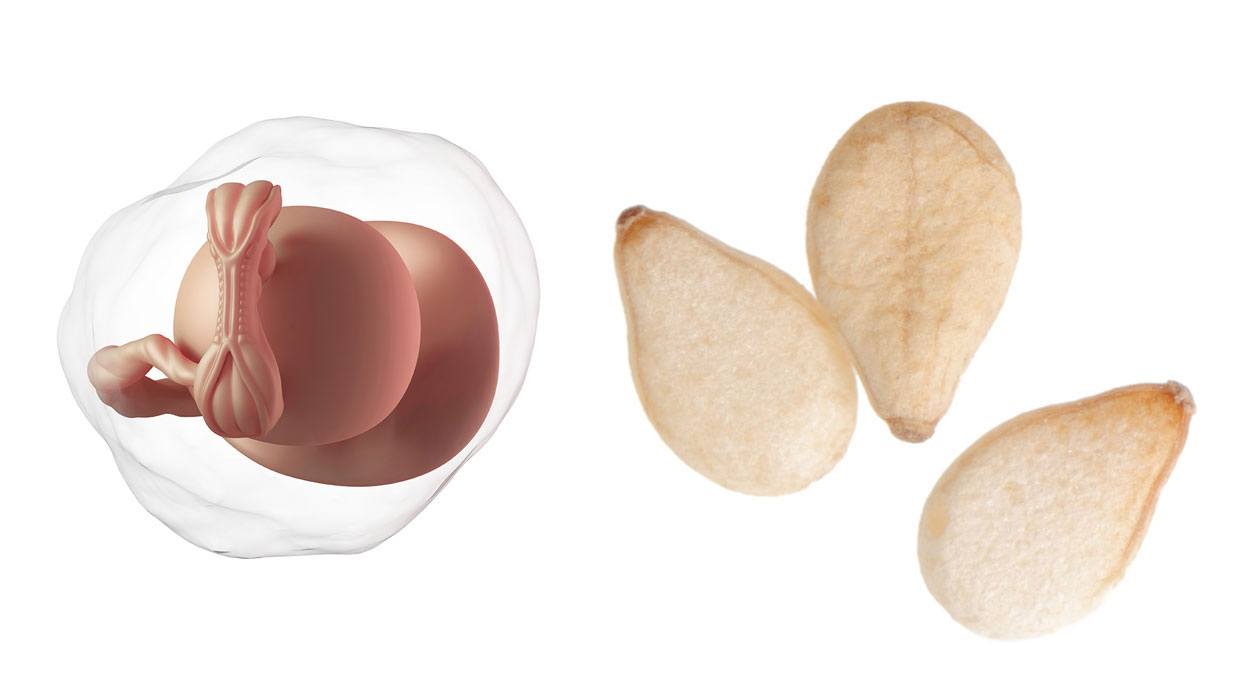
At 5 weeks pregnant, your baby is the size of a sesame seed.
By week 5, you should have missed your period, which is one of the most obvious sign you're expecting. Under the influence of hormonal changes, you can feel the first signs of pregnancy: breast swelling, fatigue, headache, and back pain.
Week 6
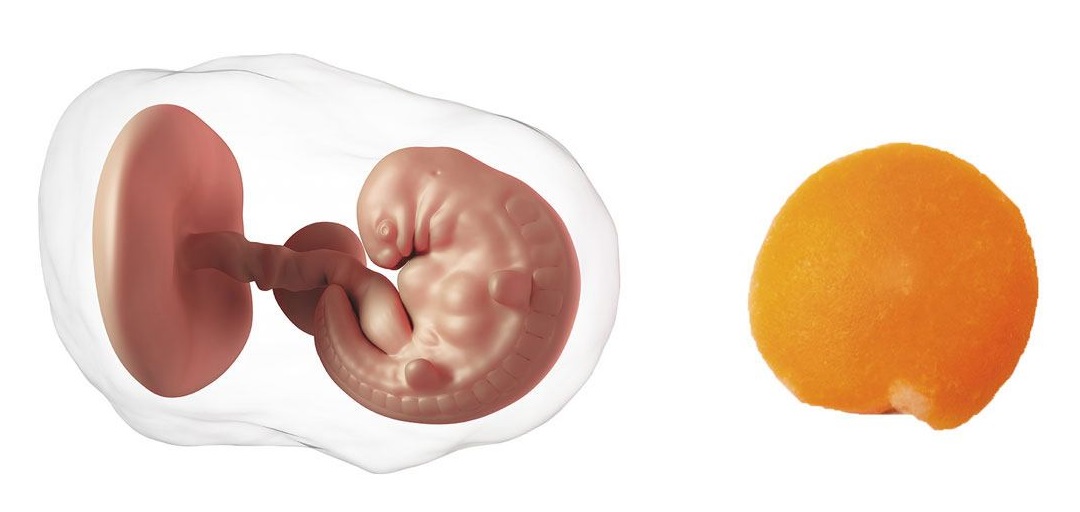
At 6 weeks pregnant, your baby is the size of a lentil.
Starting from pregnancy week 6, you may experience morning sickness. This is the result of hormonal changes occurring in your body. Malaise, breast swelling, darkening of the nipple areola, and frequent urination can bother you, too. In case of bleeding, you should consult your doctor.
Week 7
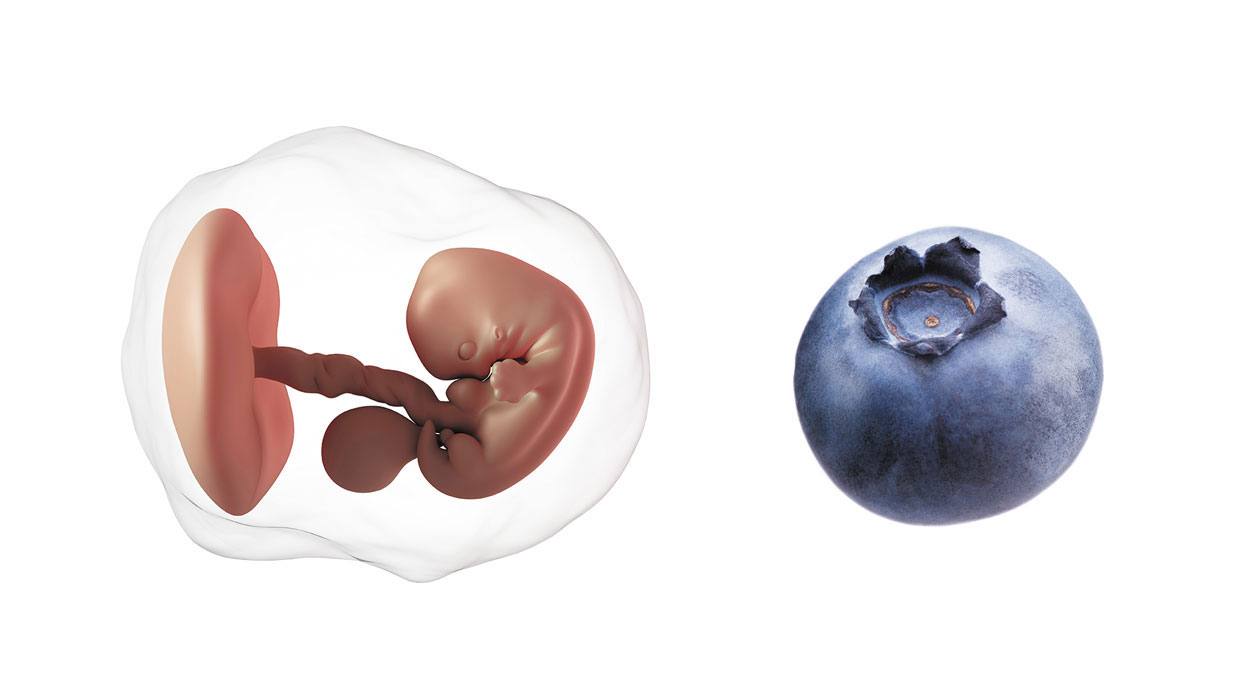
At 7 weeks pregnant, symptoms start kicking in and your uterus almost doubles in size. Be prepared for a possible increase in nausea, fatigue, heartburn, and other pregnancy symptoms. Morning sickness may give a lot of trouble. Try to find some ways to cope with it.
Week 8
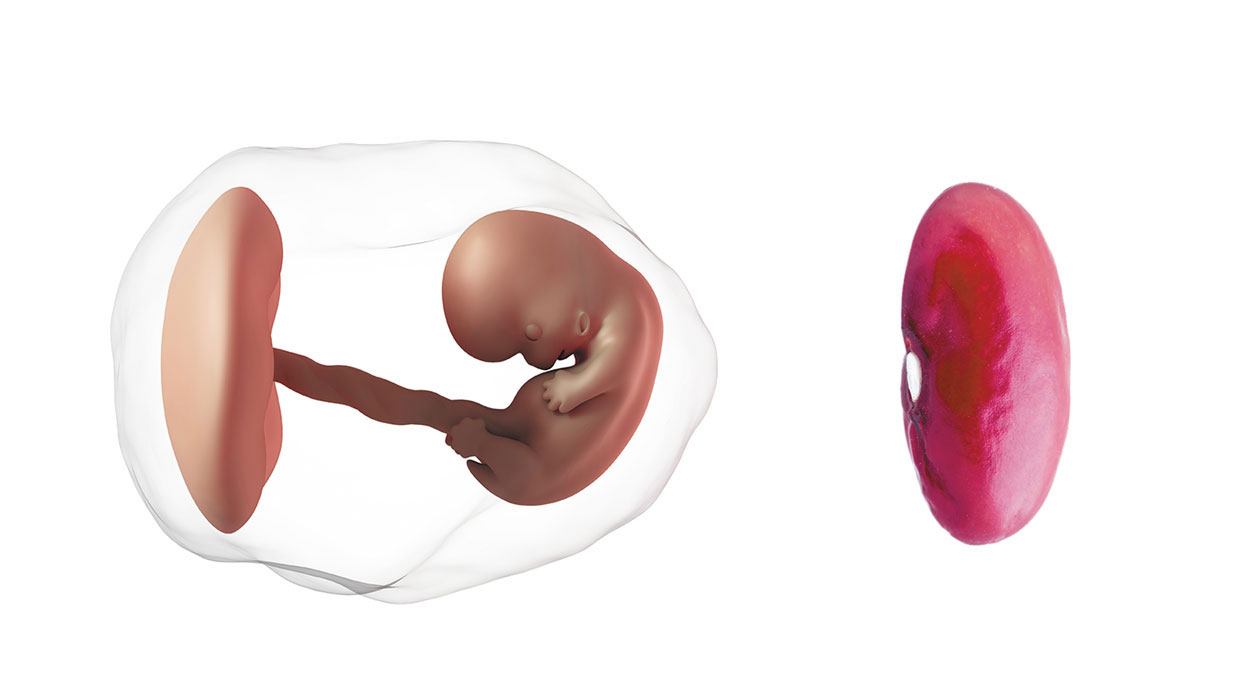
At 8 weeks pregnant, your baby is the size of a bean.
At 8 weeks pregnant, you need to plan your first visit to the gynecologist. The doctor will prescribe the necessary tests and examinations for the first trimester of pregnancy. You may feel the growing discomfort of morning sickness. Try to be patient; it usually lasts until the 14th week only.
Week 9
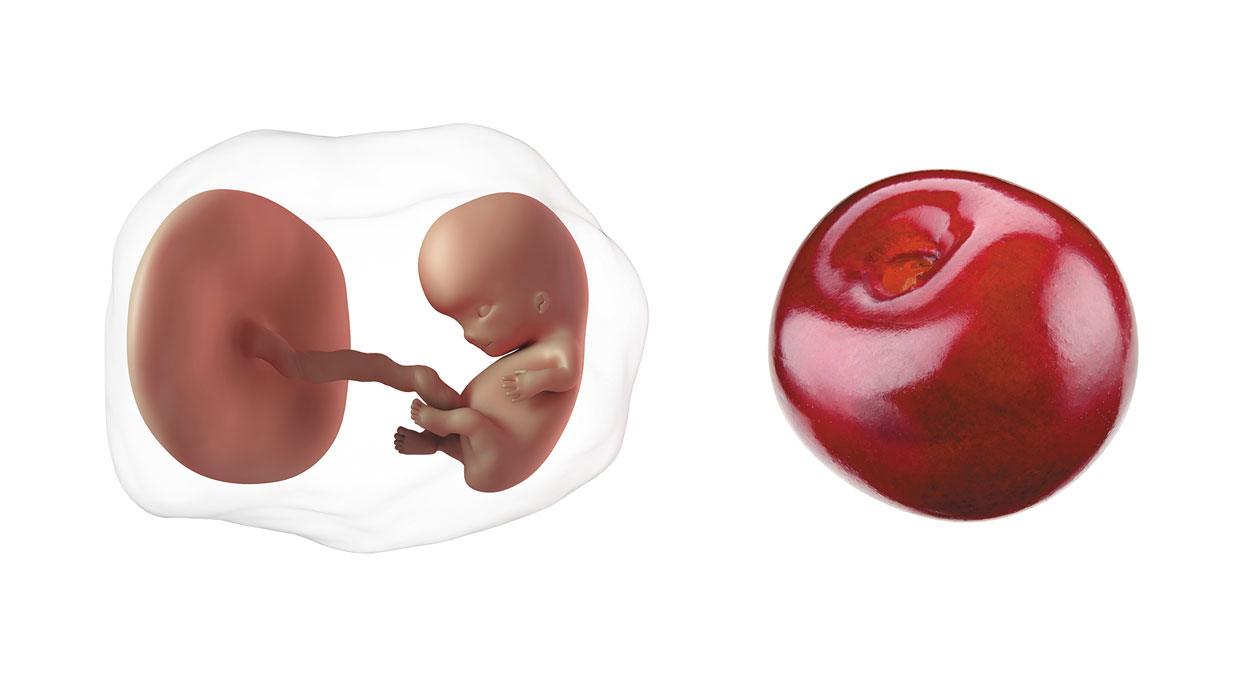
At 9 weeks pregnant, your baby is the size of a cherry.
At 9 weeks pregnant, your baby is already about 0.6–0.7 in (16–18 mm) and weighs about 0.11 oz (3 g). The tail has disappeared; human features are becoming more distinct. The joints of his/her hands and legs can flex; the nipples and hair follicles are developing. Taste buds are beginning to form on the tongue, as well as primary tooth buds in the gums.
Week 10
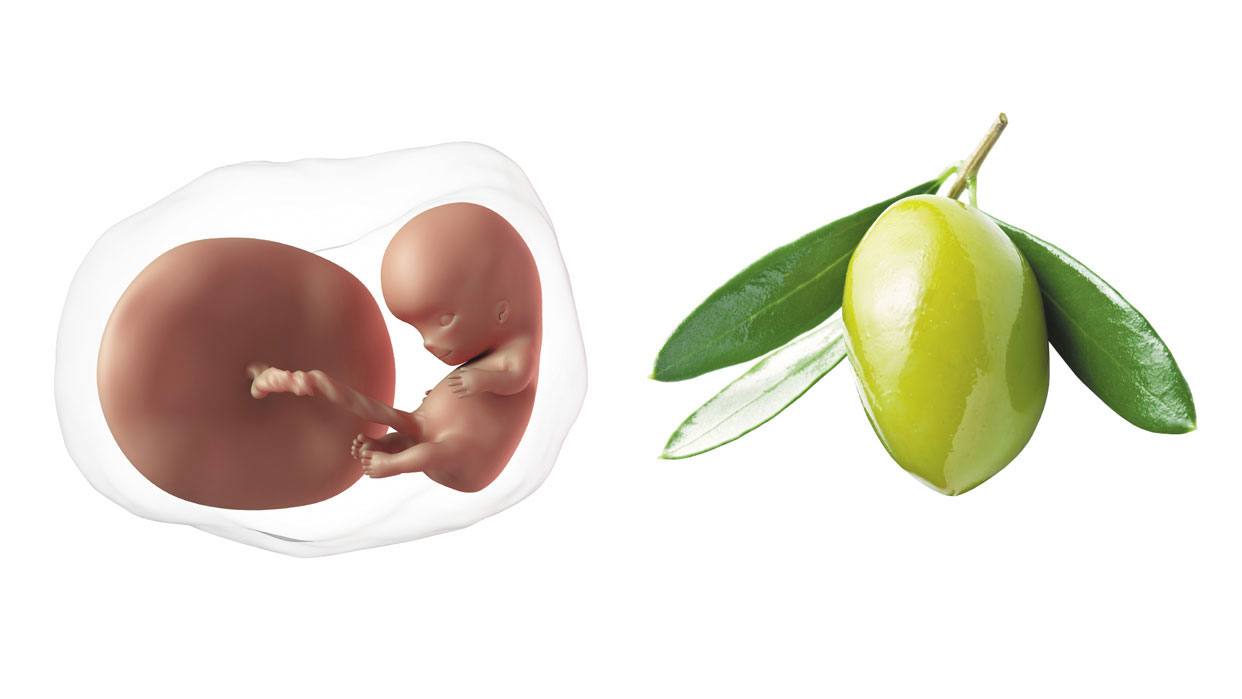
At 10 weeks pregnant, your baby is the size of a kumquat.
Week 10 of pregnancy is the time when almost all vital organs and tissues of your baby have formed. Now, they are beginning to function and grow rapidly. He or she can swallow amniotic fluid and move their arms and legs. The skin is getting covered with small hair and the fingers have tiny nails. Testes in boys already start to produce testosterone.
Week 11
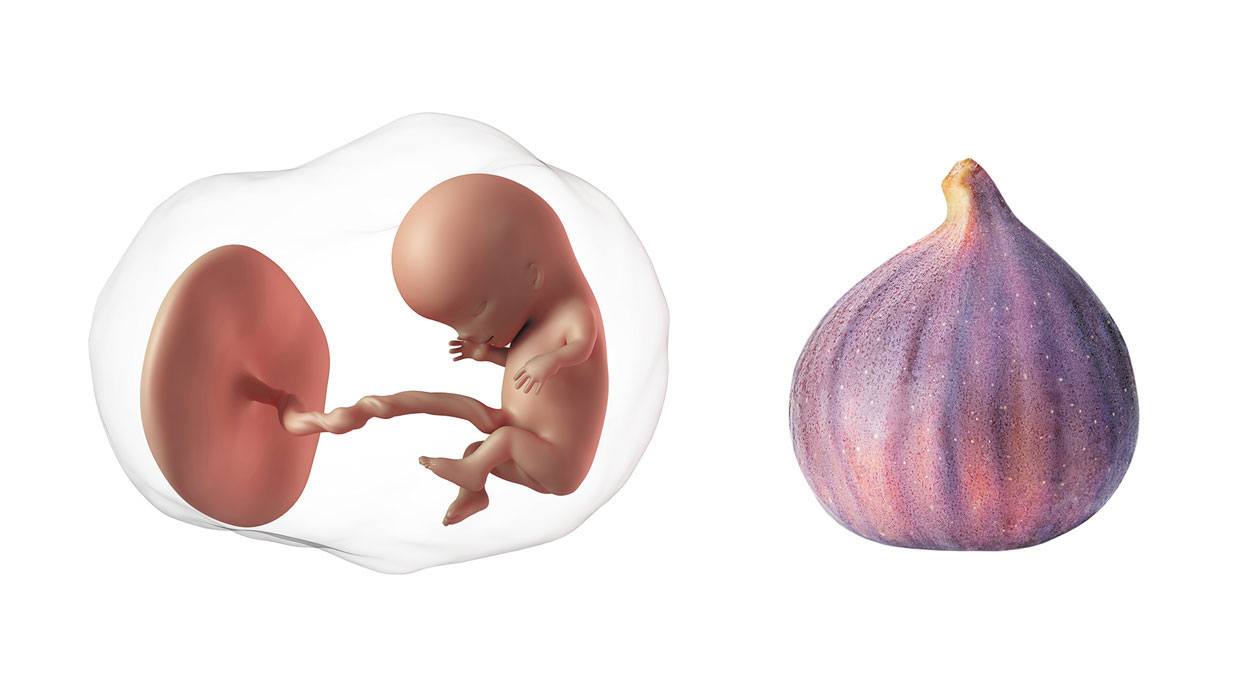
At 11 weeks pregnant, your baby is the size of a fig.
At 11 weeks pregnant, your baby has already reached 2 in (5 cm) in size. Now, his/her head is half the length of the body, but in the coming weeks, the body will grow enough to make up for it. The fetus skin is so thin and translucent that through it you can see an extensive network of vessels. Placental vessels are expanding to provide the fetus with necessary nutrients and oxygen.
Week 12
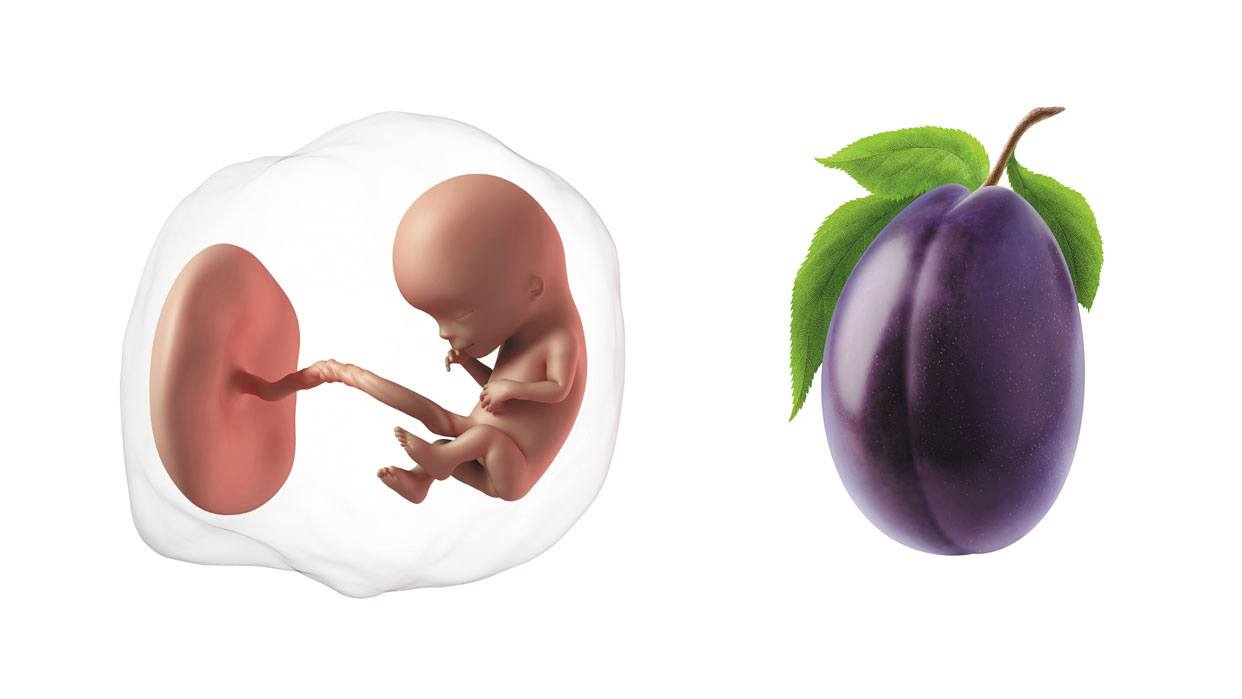
At 12 weeks pregnant, your baby is the size of a plum.
At 12 weeks pregnant, your baby weighs about 0.49 oz (14 g). His/her vocal cords are forming, and kidneys are starting to produce urine, filling the bladder. Although you cannot feel it yet, you can see the baby during a sonogram screening (ultrasound).
Week 13
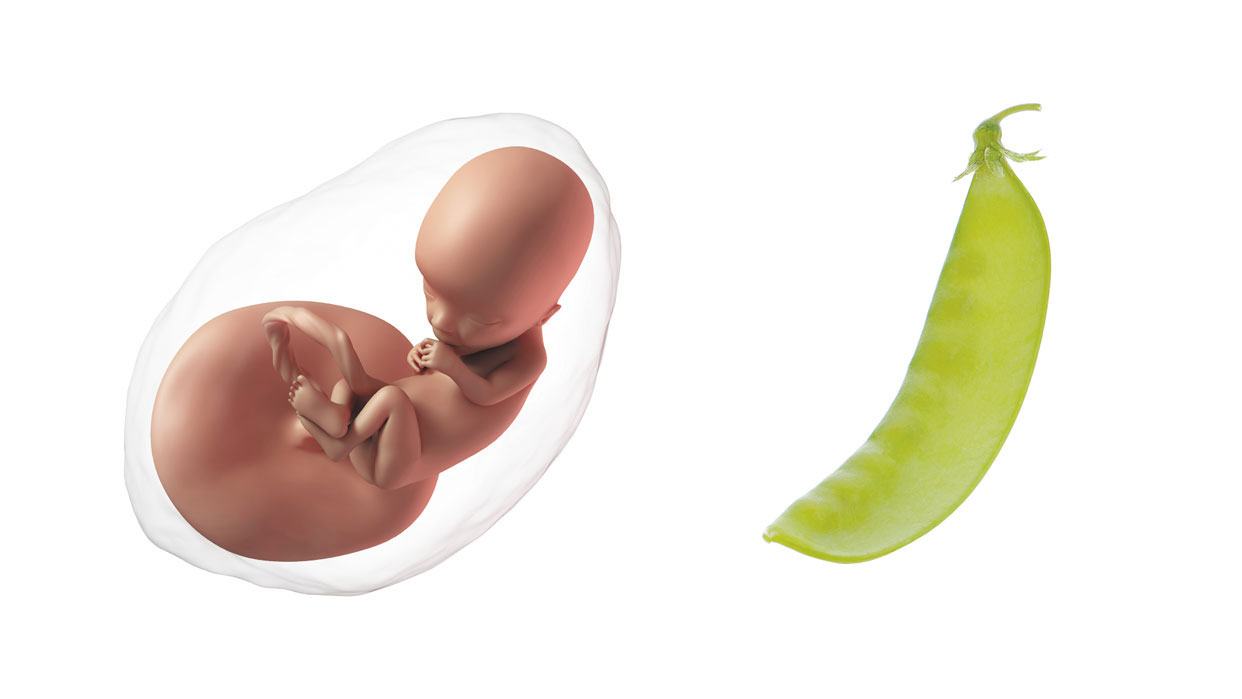
At 13 weeks pregnant, your baby is the size of a pea pod.
Welcome to the last week of the first trimester! Most early pregnancy symptoms will soon be left behind. At 13 weeks pregnant, your baby is constantly growing. Now, he/she is more than 2.8 in (7 cm) from the top of his/her head to the coccyx.
Week 14
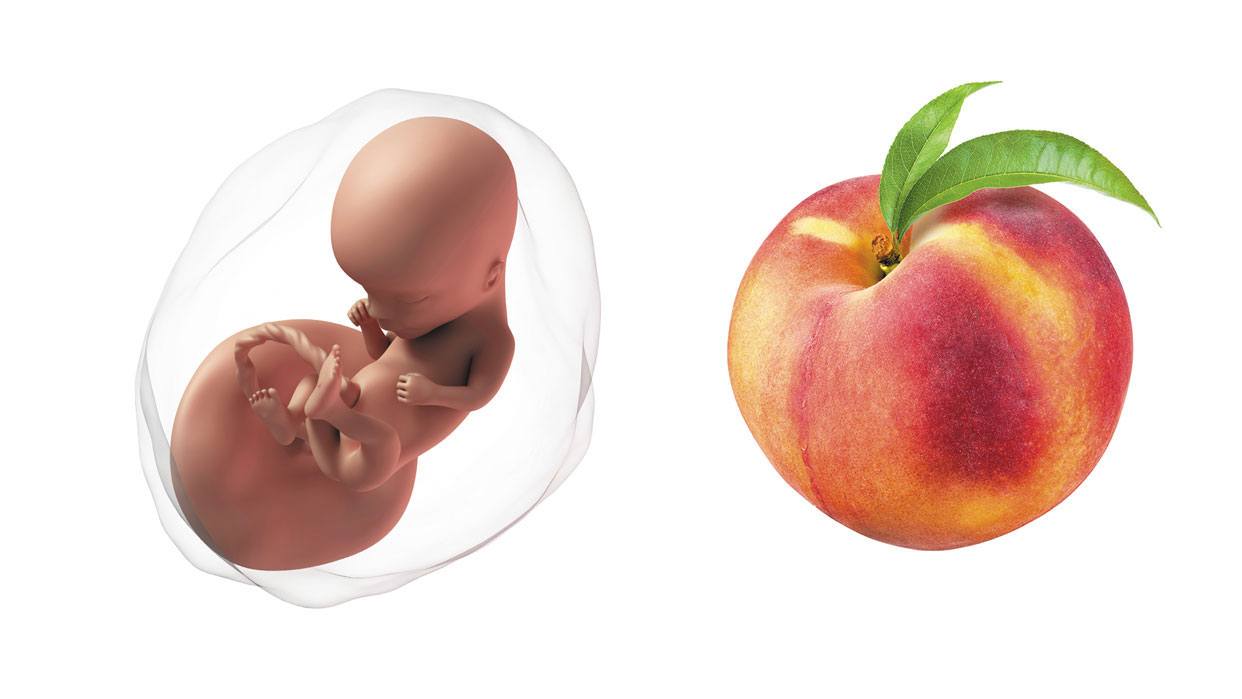
At 14 weeks pregnant, your baby is the size of a peach.
At 14 weeks pregnant, your baby is developing rapidly. In a while, you will be able to feel them moving and kicking. Your body starts actively gaining weight. This occurs due to an increase in blood and lymph volume.
Week 15
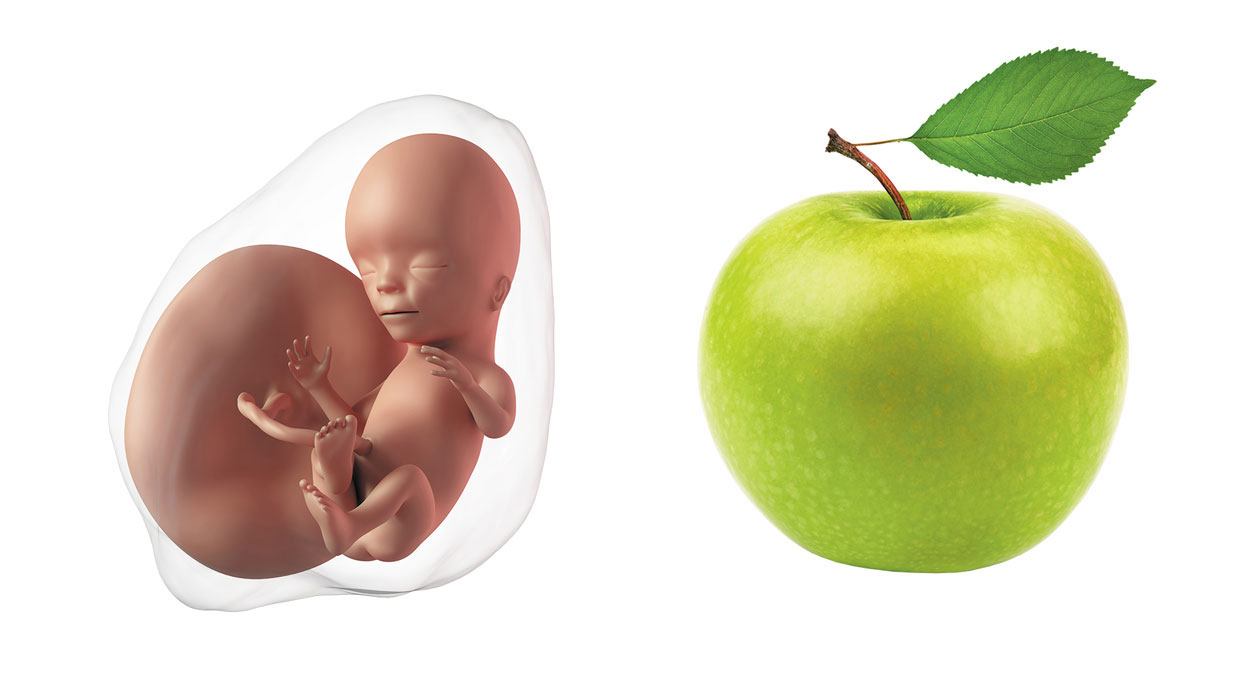
At 15 weeks pregnant, your baby is the size of an apple.
At 15 weeks pregnant, your baby your baby is actively drawing in amniotic fluid through his/her nose. Very soon you'll start looking pregnant indeed as your uterus has risen from your pelvic region to your lower abdomen. Time to plan pregnancy shopping!
Week 16
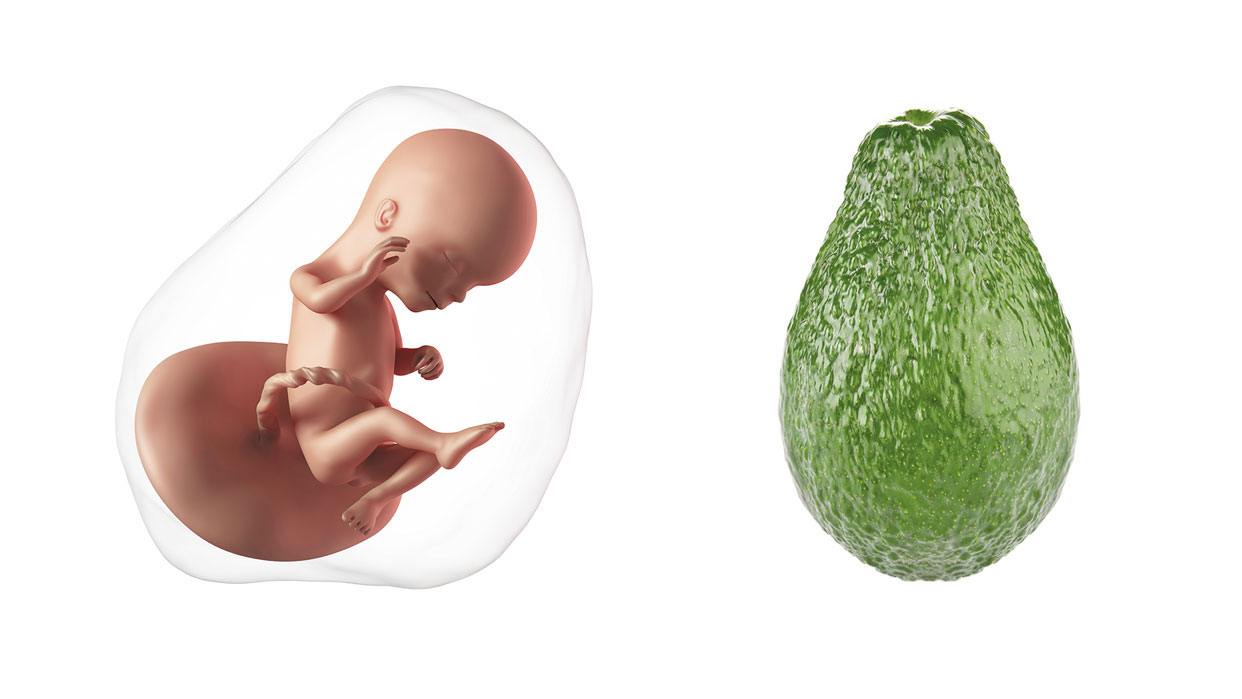
At 16 weeks pregnant, your baby is the size of an avocado.
You're on week 16 of your pregnancy, and things are really starting to gear up! Your tiny baby is not so tiny anymore, and it most definitely looks like a human baby now. By week 16 of your pregnancy, you're 4 months in. That means you're nearly halfway there and only have 5 more months to go!
Week 17
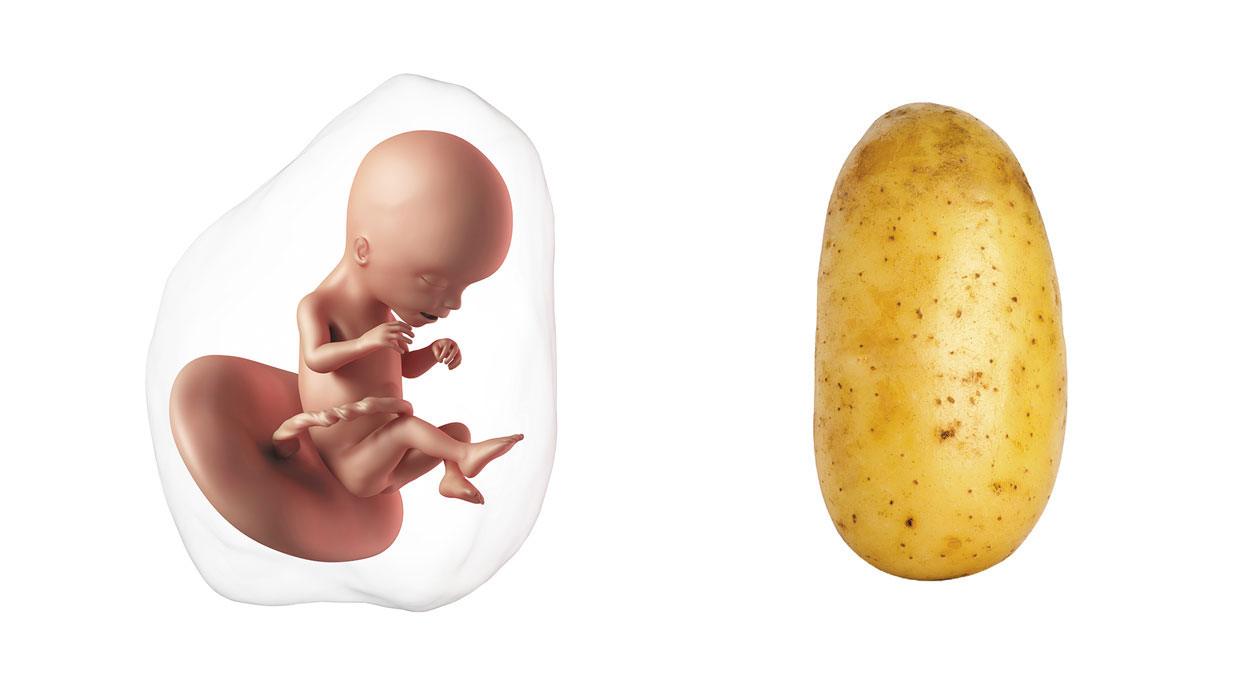
At 17 weeks pregnant, your baby is the size of a potato.
If you've been enjoying a relatively subtle pregnancy with very little belly to show for it, that's probably over now! Your waist will gradually disappear as your uterus moves upwards and out of your pelvis.
Week 18
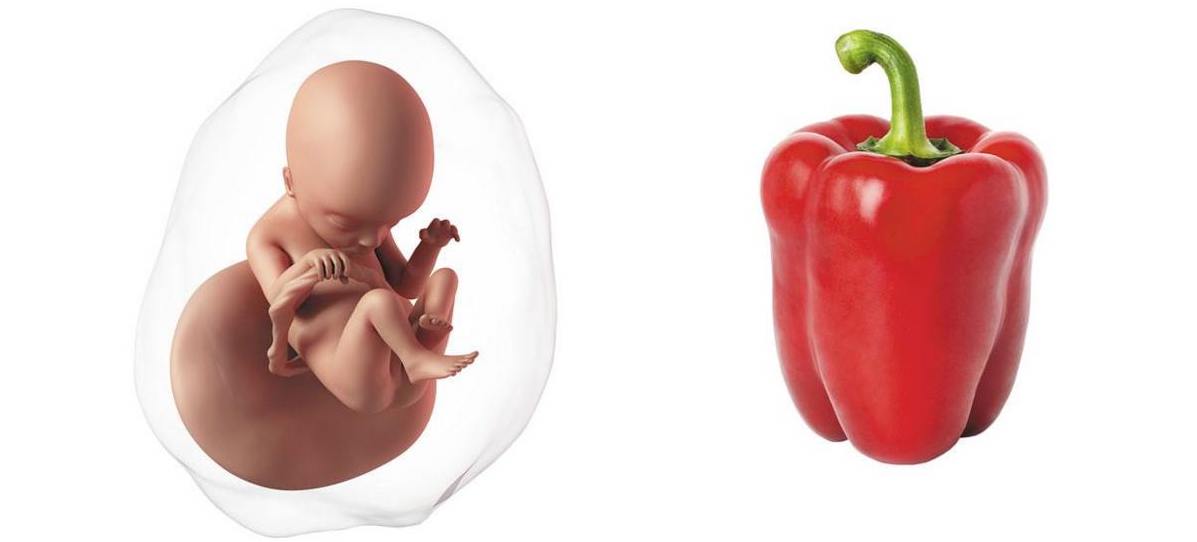
At 18 weeks pregnant, your baby is the size of a bell pepper.
If you've been astonished by your baby's rapid growth and weight gain over the last few weeks, by week 18 this will start to level off a little — but there's still lots of big news in your little one's early life! At this stage, he or she can yawn, stretch, and even make facial expressions like frowning. The baby's sense of taste is developing, and taste buds can now distinguish between sweet and bitter.
Week 19

At 19 weeks pregnant, your baby is the size of a mango.
At 19 weeks pregnant, your rounded belly is very noticeable. The first hair appears on the baby's head, and the brain areas responsible for the senses — tactile, gustatory, olfactory, visual and auditory — are developing rapidly.
Week 20

At 20 weeks pregnant, your baby is the size of a grapefruit.
Congratulations! You are halfway to meeting your baby. The baby's legs have almost straightened, so from now on, he/she will be measured from head to toe.
Week 21
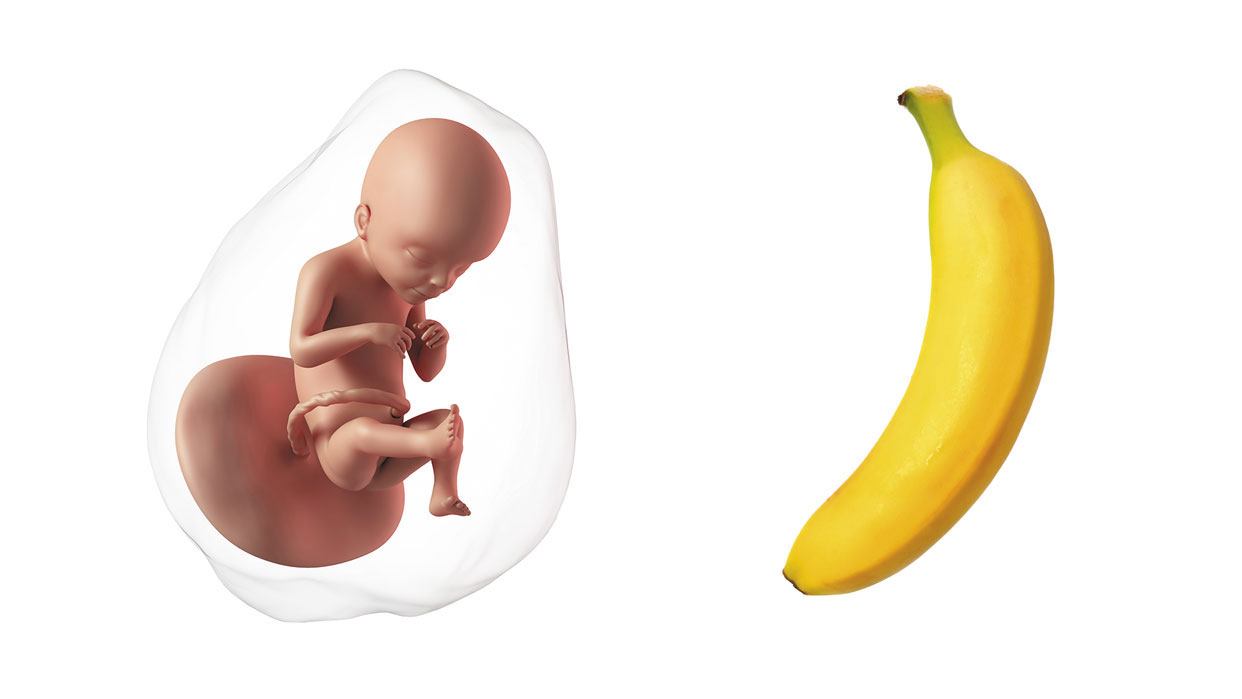
At 21 weeks pregnant, your baby is the size of a banana.
As a 21 week pregnant woman, you have crossed the halfway line on your journey to becoming a mother. Your baby is getting bigger. You can now definitely feel her presence as she explores the real estate that you've prepared for her.
Week 22
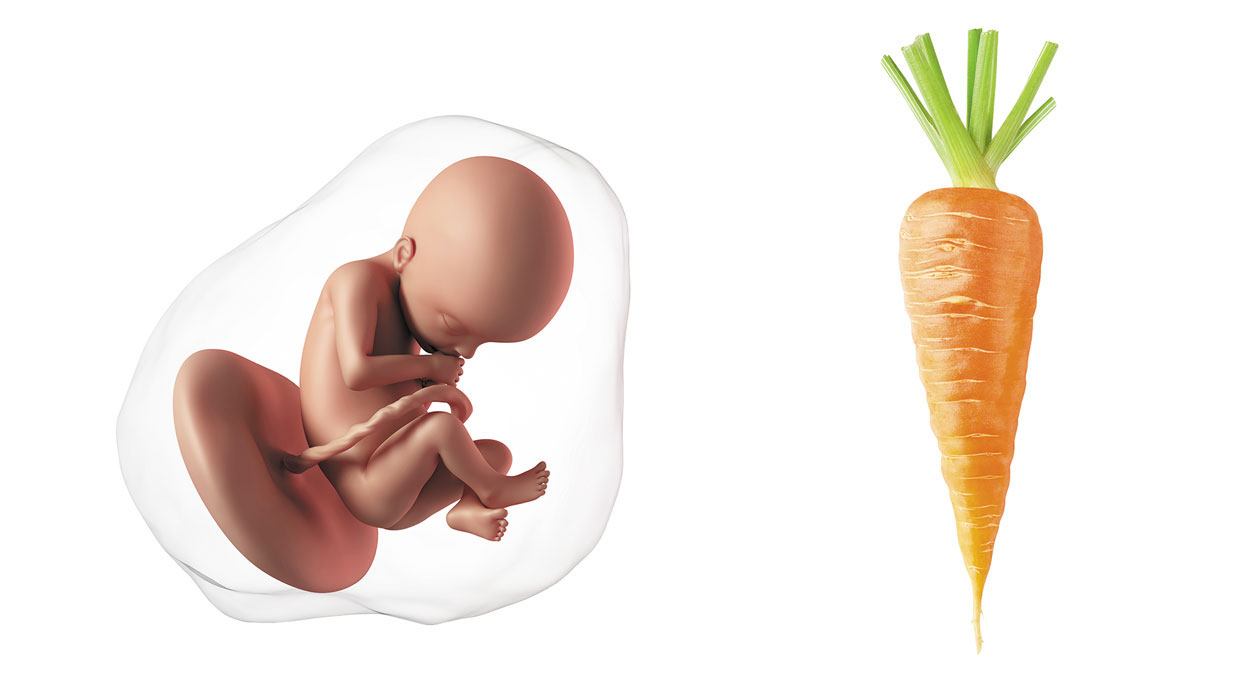
At 22 weeks pregnant, your baby is the size of a carrot.
If you are entering the 22nd week of your pregnancy, without doubts it is getting crowded in there! Your baby is growing and invading your space. And your uterus stretches to about 2 cm (0.8 in) above your belly button to fit your growing baby.
Week 23
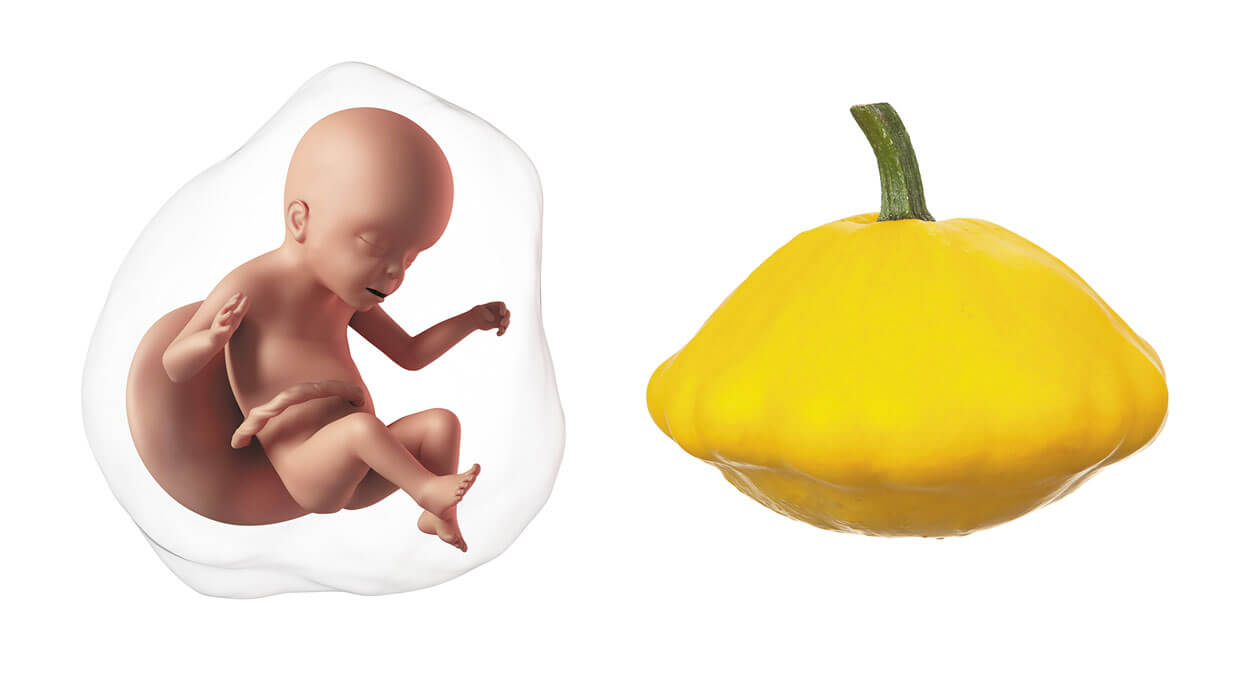
At 23 weeks pregnant, your baby is the size of a squash.
For many women, being 23 weeks pregnant is an exciting time because you may finally be showing your baby bump! Among other things, your baby's eyes and lips are taking shape. They will begin to gain weight more weight which will eventually fill out their wrinkly skin.
Week 24
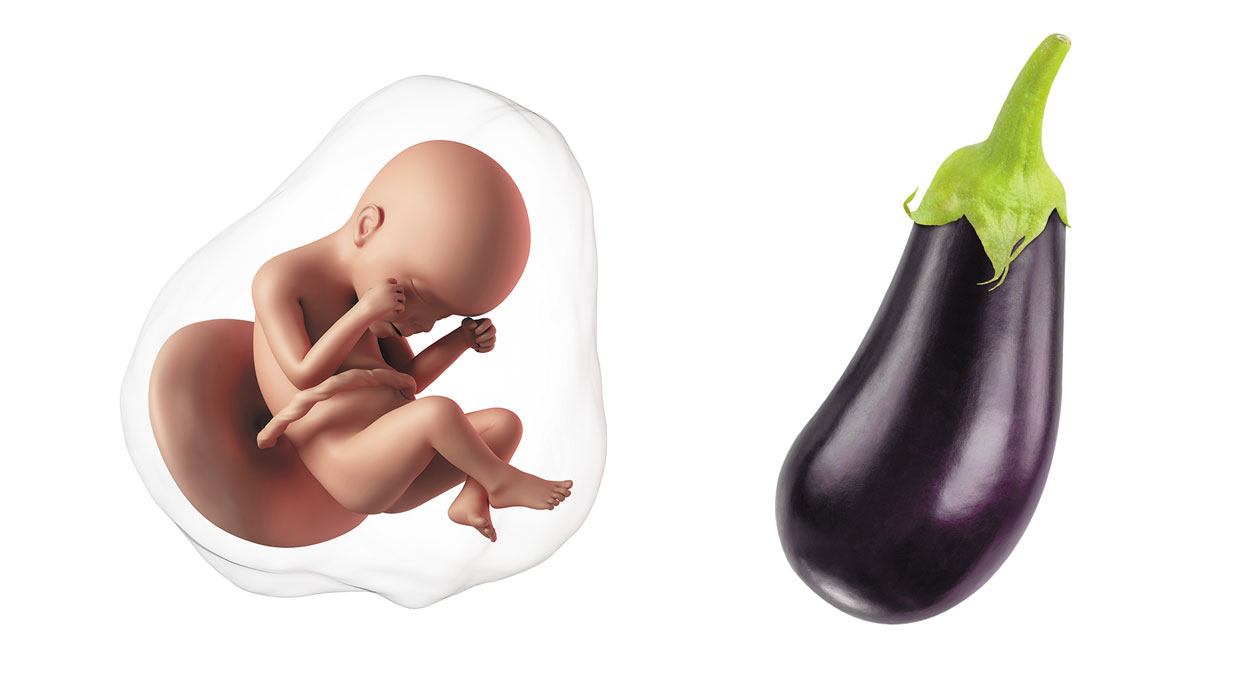
At 24 weeks pregnant, your baby is the size of an eggplant.
At 24 weeks pregnant, your baby is almost a foot long. You could be experiencing a tingling sensation in your joints, which is known as carpal tunnel syndrome. It is a common condition during pregnancy which occurs due to fluid build-up in your joints which results in compression of the median nerve.
Week 25

At 25 weeks pregnant, your baby is the size of a full ear of corn.
Once you reach week 25 of your pregnancy, you'll be nearing the end of your second trimester. It can feel like times flies! At 25 weeks pregnant, you're approximately 5 months and 2 weeks along. Your baby has been growing steadily and even though it's still not ready, it won't be long before it comes into the world.
Week 26
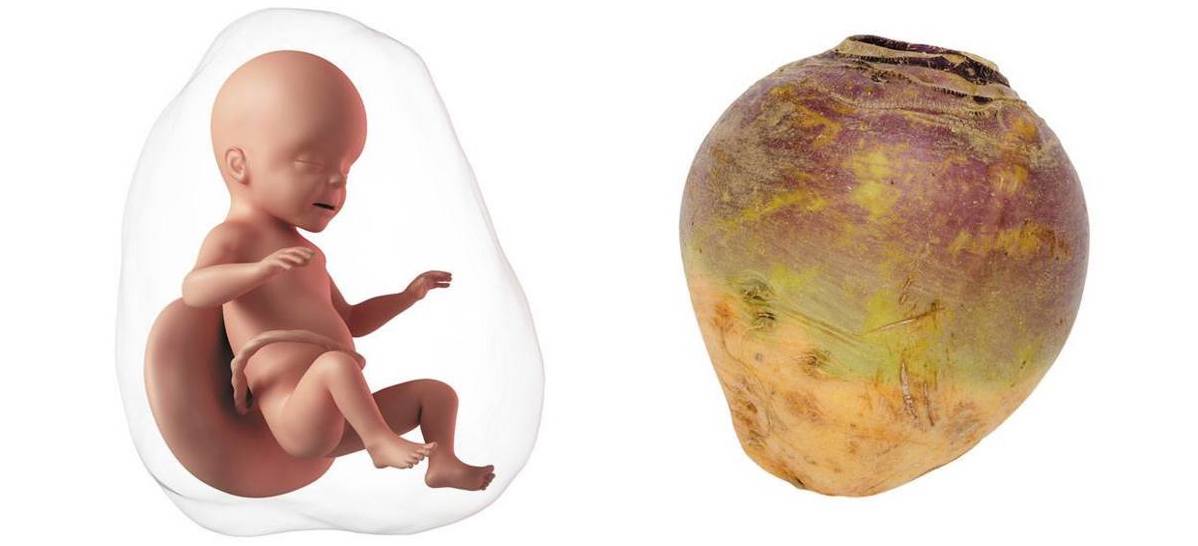
At 26 weeks pregnant, your baby is the size of a beetroot.
You're likely to put on between 16 and 22 pounds by now. At one point during this week, your baby will open his or her eyes for the first time. He or she is not yet able to see anything inside of the uterus but will blink closing and opening his or her eyes when falling asleep and waking up.
Week 27
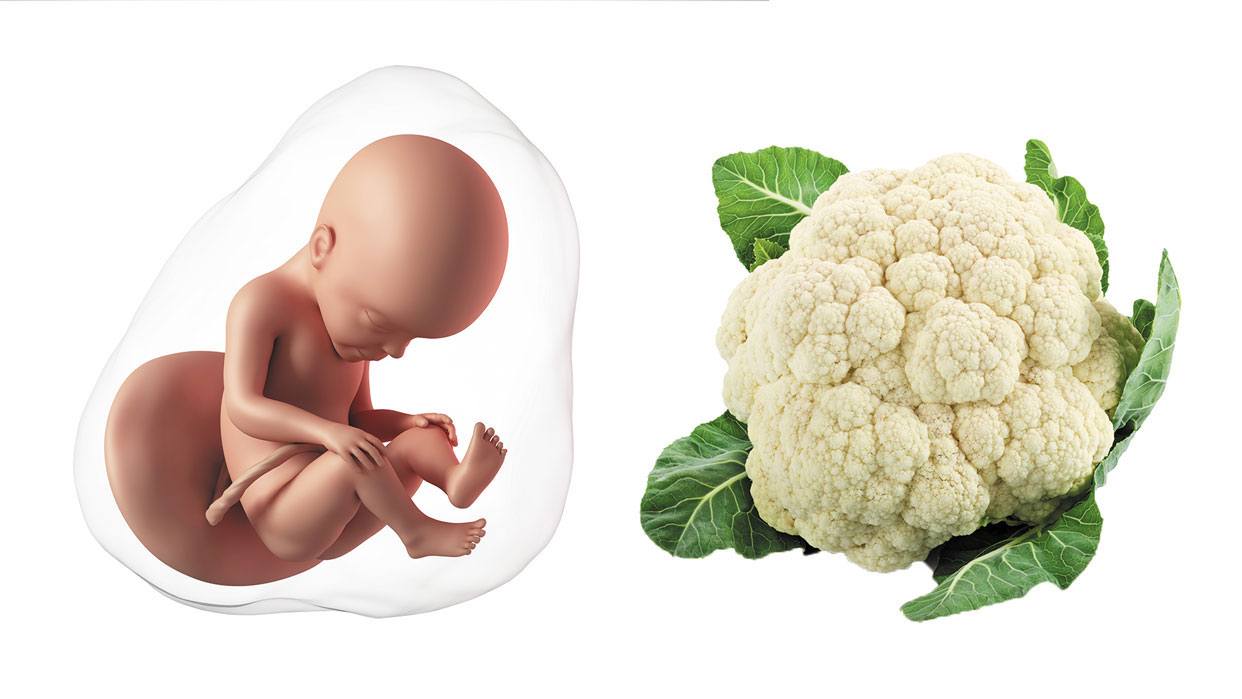
At 27 weeks pregnant, your baby is the size of a cauliflower.
The 27th week of the pregnancy marks the final two weeks of the second trimester. If your baby is more active at night you might suffer from insomnia and have trouble sleeping. Compensate for the lack of sleep time during the night by napping during the day more when the baby is sleeping.
Week 28
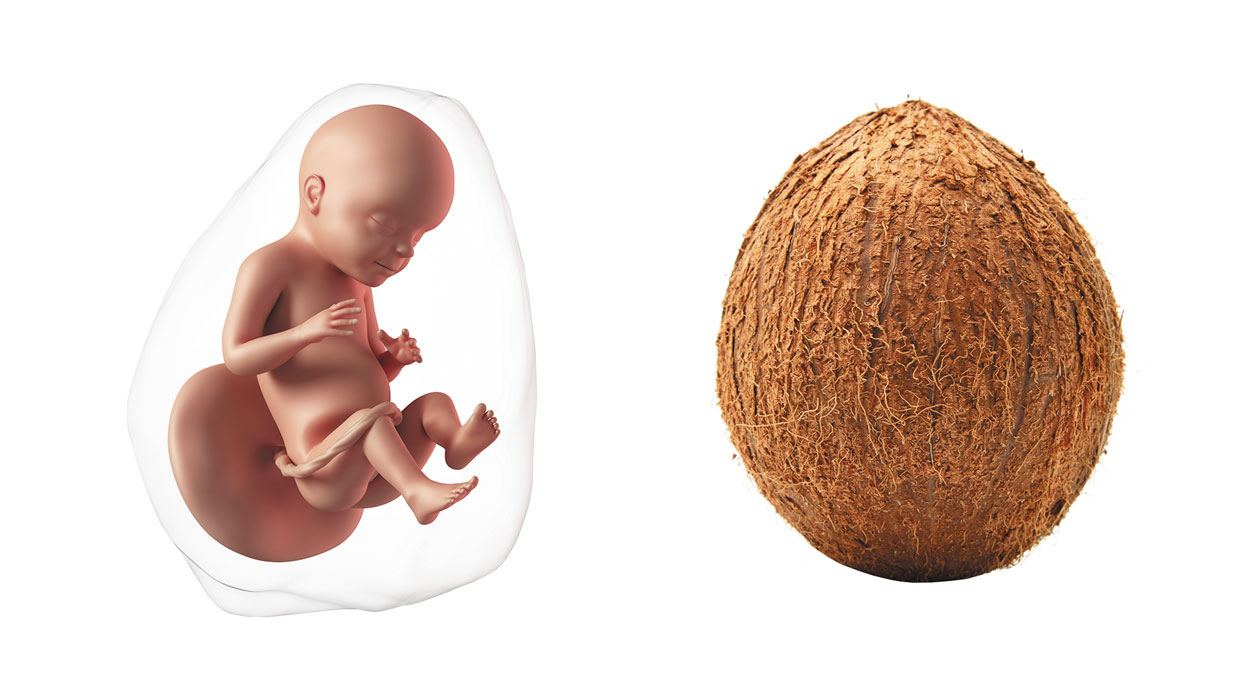
At 28 weeks pregnant, your baby is the size of a coconut.
At 28 weeks you are now entering the third trimester of your pregnancy. At this stage, your baby is pretty well-developed. Her organs, tissues, and nerves continue to grow, but she already has all of the systems necessary for survival outside the uterus. Towards the end of the pregnancy, babies start to recognize familiar sounds and voices.
Week 29
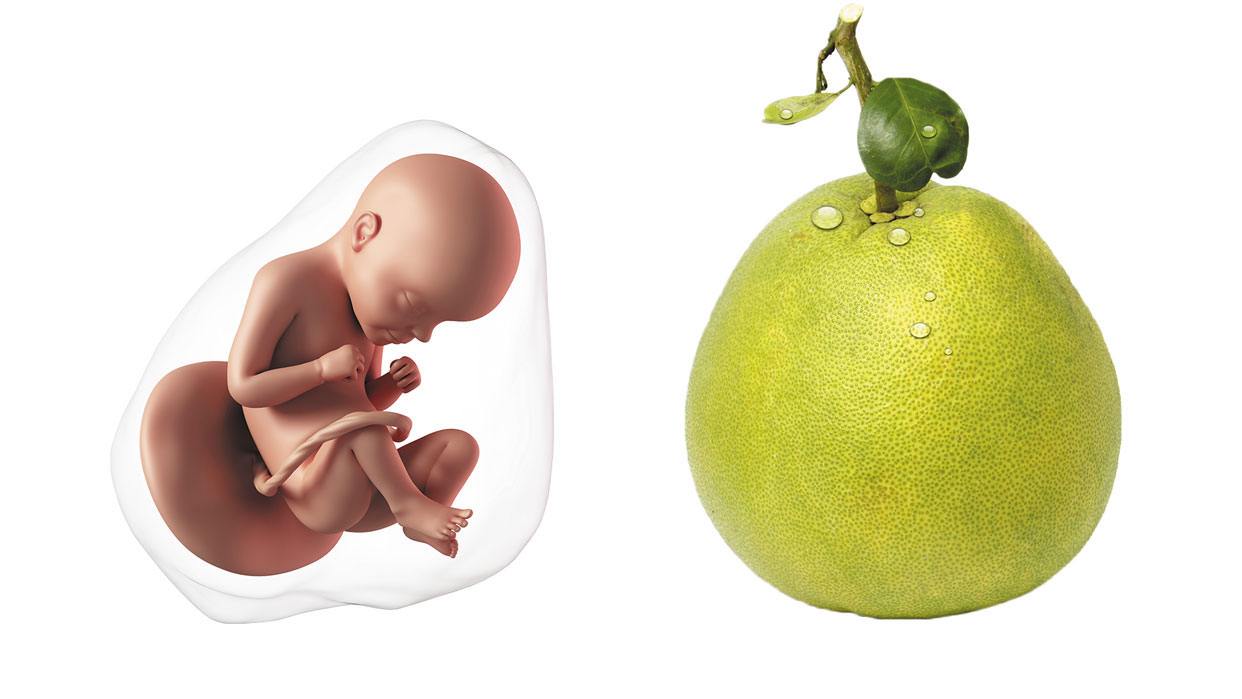
At 29 weeks pregnant, your baby is the size of a pomelo.
At 29 weeks pregnant, you're likely to develop varicose veins like 40 percent of expectant moms. It's also a good time to start doing a kick count. Let your doctor or midwife know if you notice that your baby is becoming less active.
Week 30
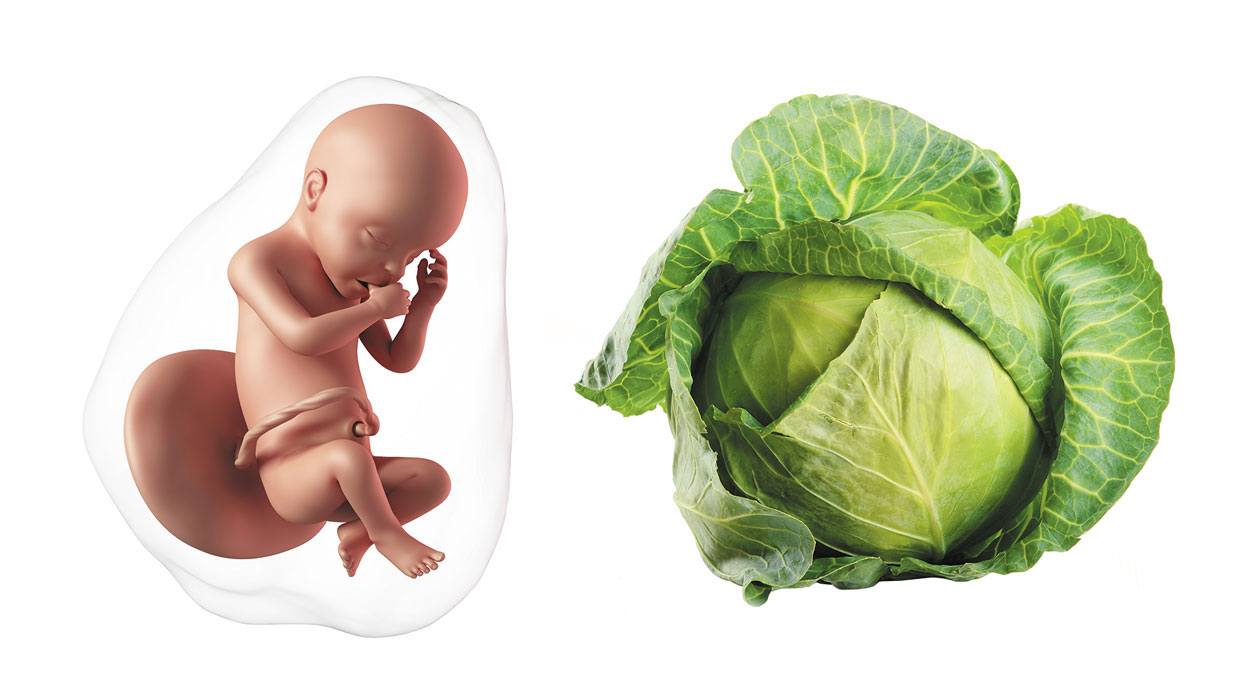
At 30 weeks pregnant, your baby is the size of a head of cabbage.
At 30 weeks pregnant, you are likely to experience shortness of breath. Your baby is still up high near your rib and is waiting a bit – it is soon expected to drop down into your pelvis.
Week 31
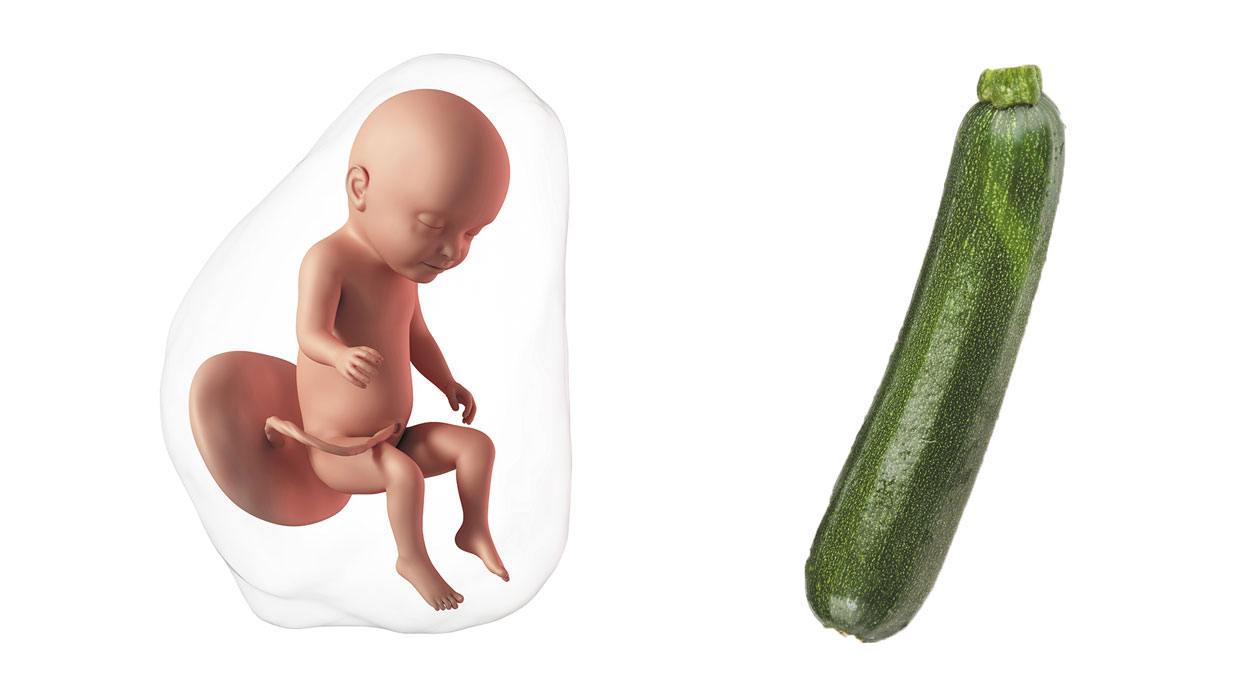
At 31 weeks pregnant, your baby is the size of a head of a zucchini.
At 31 weeks pregnant, your breasts can get leaky producing the first baby's food – colostrum. This is one of the symptoms that your body is getting ready for the big day. You are likely to experience shortness of breath. This week your baby is going through major nerve and brain development.
Week 32
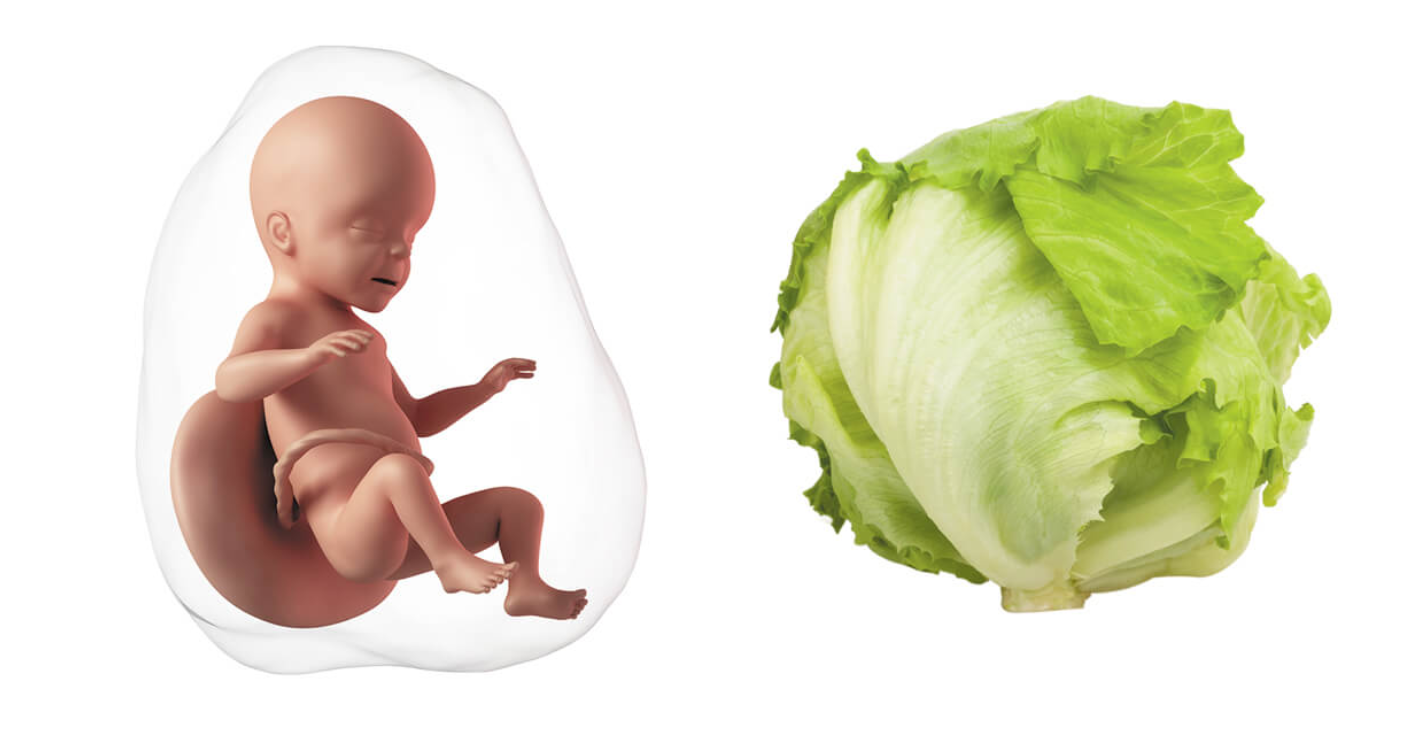
At 32 weeks pregnant, your baby is the size of a head of lettuce.
At 32 weeks pregnant, your body may start flexing its muscles preparing for the big day. Your baby is also preparing for her debut mastering the skills she'll need to thrive outside your womb: swallowing, breathing, sucking.
Week 33

At 33 weeks pregnant, your baby is the size of a pineapple.
At 33 weeks pregnant, you may notice that your baby's movements are affected by your daily routine. Your belly continues to grow and it's getting even more troublesome to find a comfortable sitting or sleeping position.
Week 34
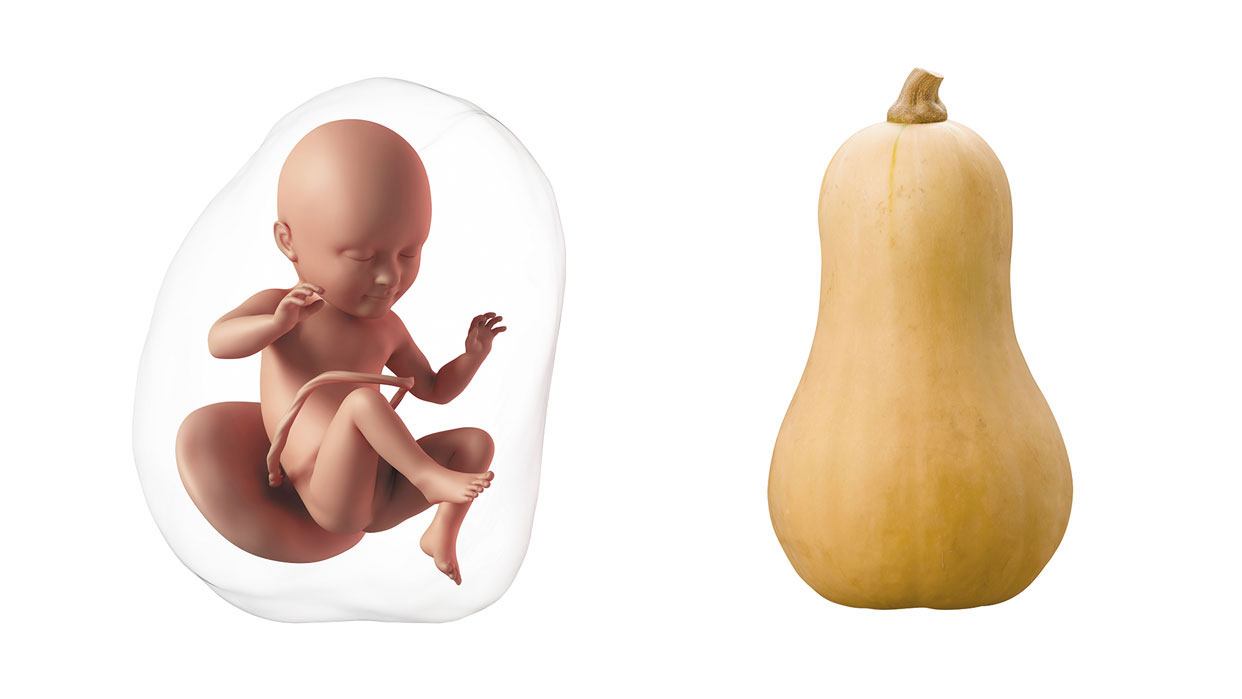
At 34 weeks pregnant, your baby is the size of a butternut squash.
At 34 weeks pregnant, your breasts could start leaking small amounts of yellowish colostrum. Your baby is already the size of a school bag and weighs as a melon. If you're worried about your safety at work, time to talk to your employer about maternity benefits.
Week 35
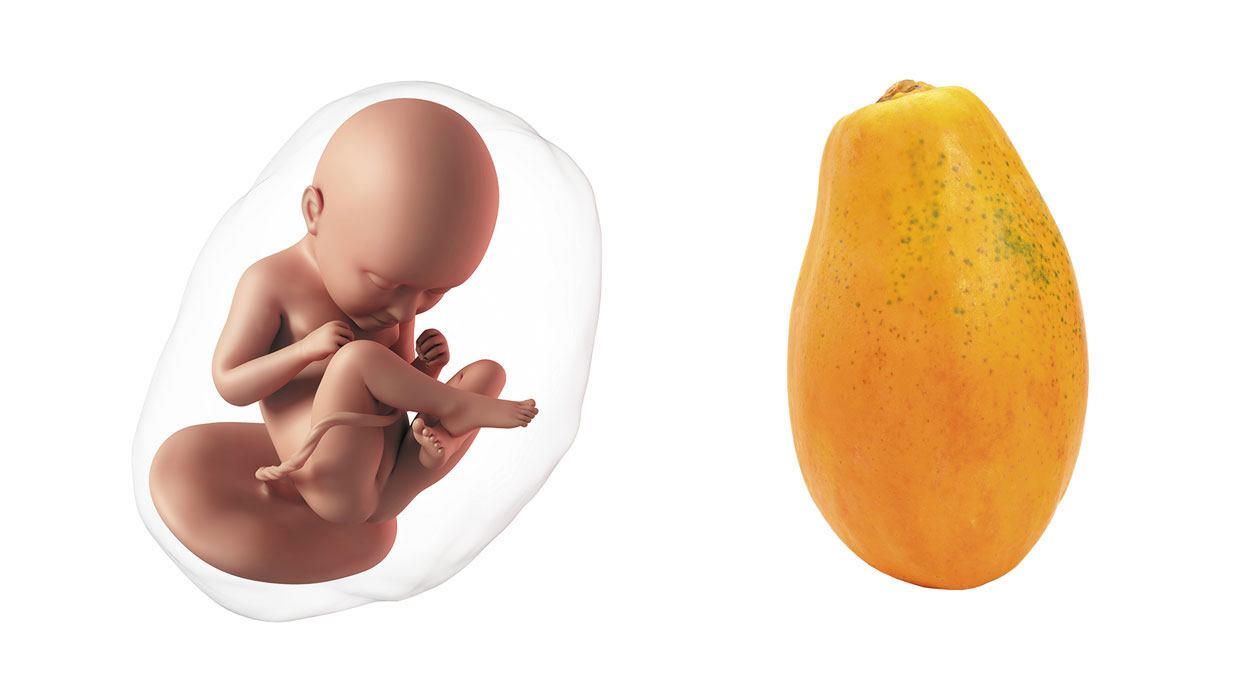
At 35 weeks pregnant, your baby is the size of a honeydew melon.
At 35 weeks pregnant, you may know how your baby's moving in your womb just by looking at your bump. It can you give you some discomfort and make you a bit breathless. At this point, many moms can't wait for the baby to get here, while others are feeling a bit anxious about giving birth. Both feelings are completely normal!
Week 36
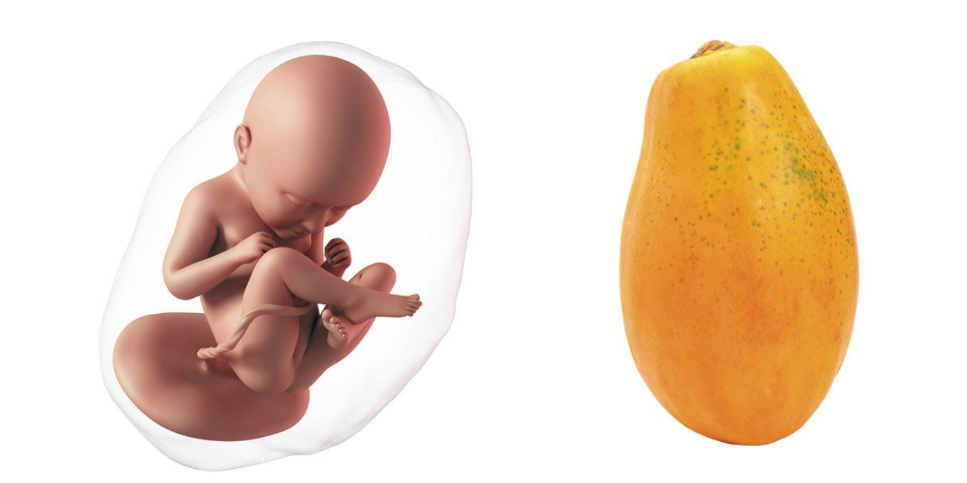
At 36 weeks pregnant, your baby is the size of a papaya.
At 36 weeks pregnant, your baby is sleeping between 60 and 80% of the time. It has finally moved into your pelvic cavity, the pressure on your diaphragm is released, and lightening happens. Your baby can now open its eyes, suck its thumb, breathe, and recognize voices!
Week 37
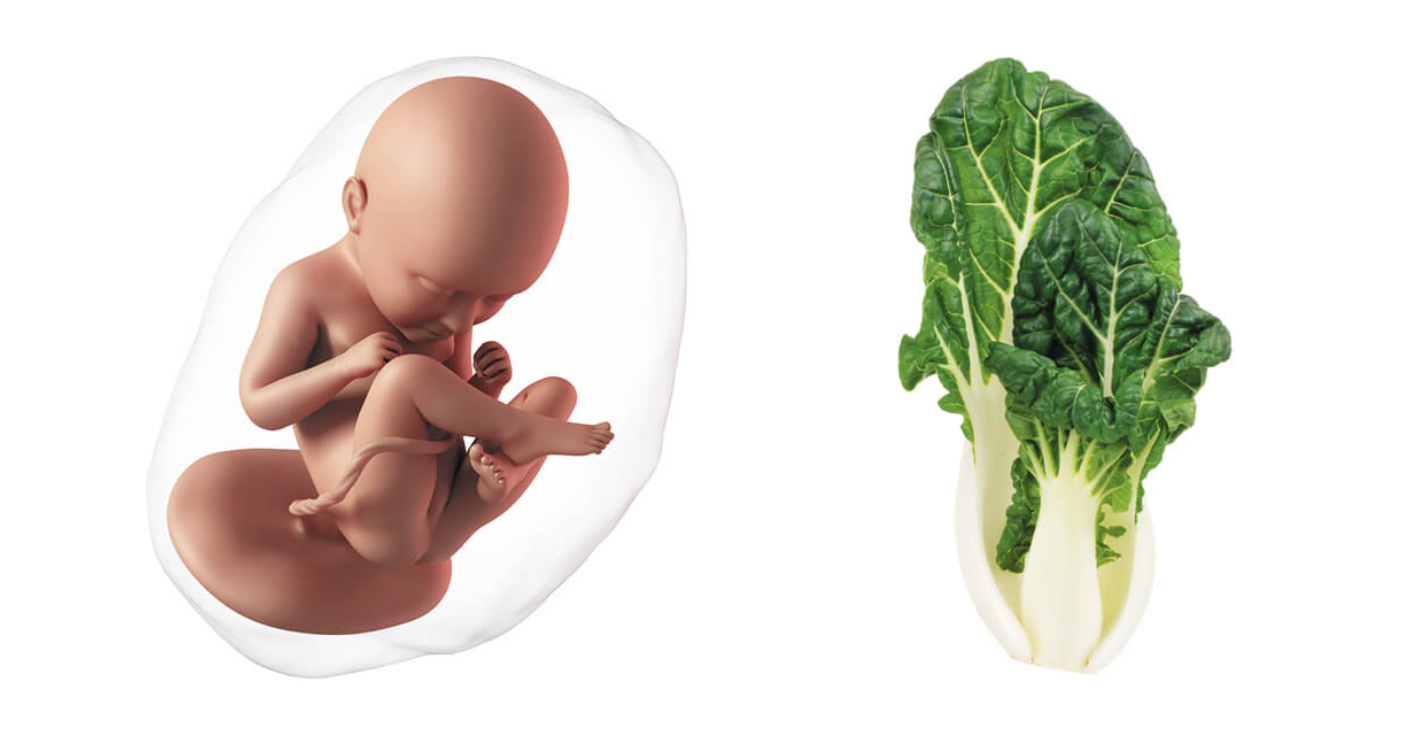
At 37 weeks pregnant, your baby is the size of a head of romaine lettuce.
Welcome to your 37th week of pregnancy, and congratulations! The baby moves further into the pelvis. It is considered to be 'at-term' and can actually arrive any day now. Make sure you are ready for the arrival of a new family member.
Week 38
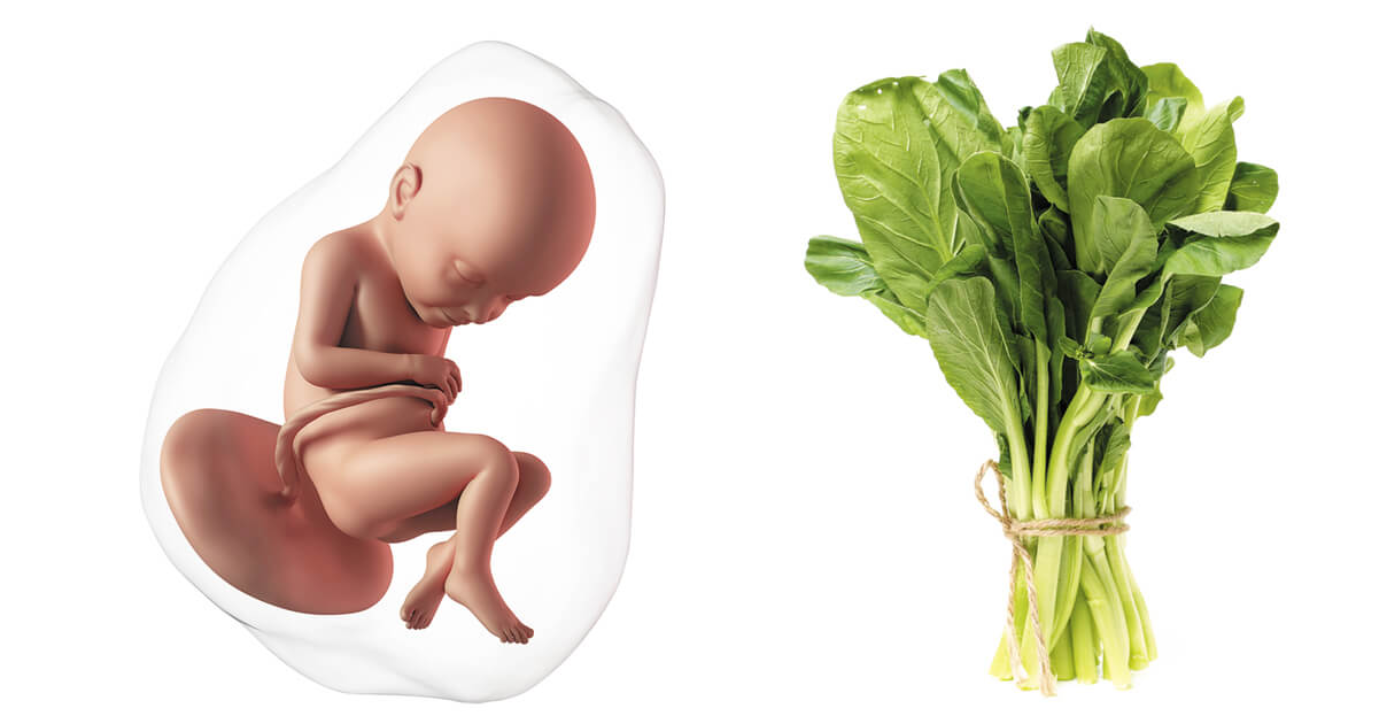
At 38 weeks pregnant, your baby is the size of Swiss chard.
At 38 weeks pregnant, you can find yourself spending the whole life peeing. The pressure on your bladder is tremendous. Your baby is a fully functioning little human and your placenta is fully grown.
Week 39

At 39 weeks pregnant, your baby is the size of a small watermelon
Welcome to the week 39 of pregnancy! Your baby is full term, meaning that it is fully developed and is only waiting for the right time to make an entrance into the world. Have you prepared everything that is needed to welcome your baby?
Week 40
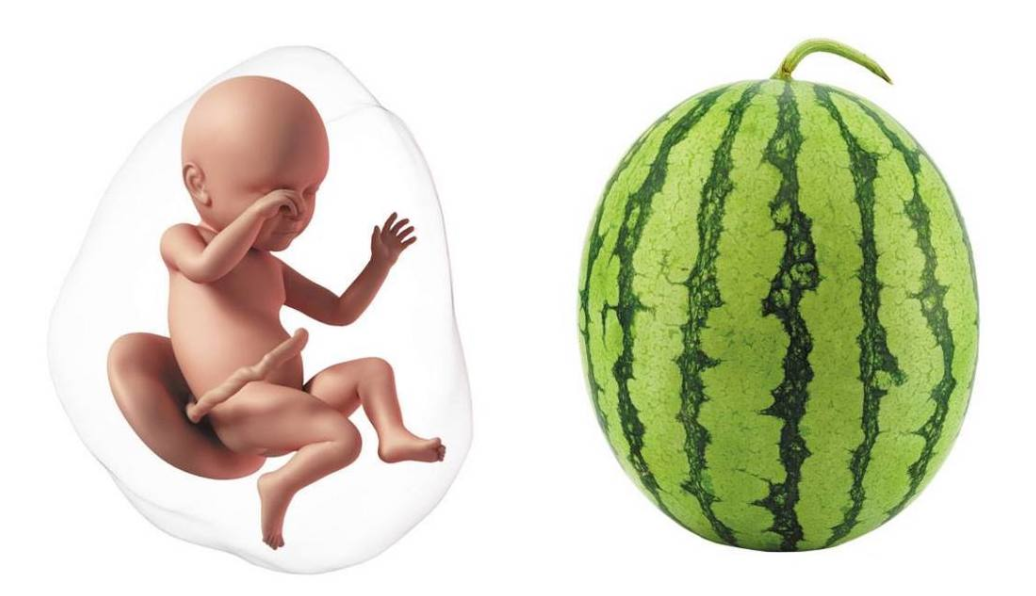
At 40 weeks pregnant, your baby is the size of a mini watermelon.
At 40 weeks pregnant, you may feel disappointed that your due date has come and gone. Don't panic and make the last preparations for a new human who'll soon join the world.
Week 41
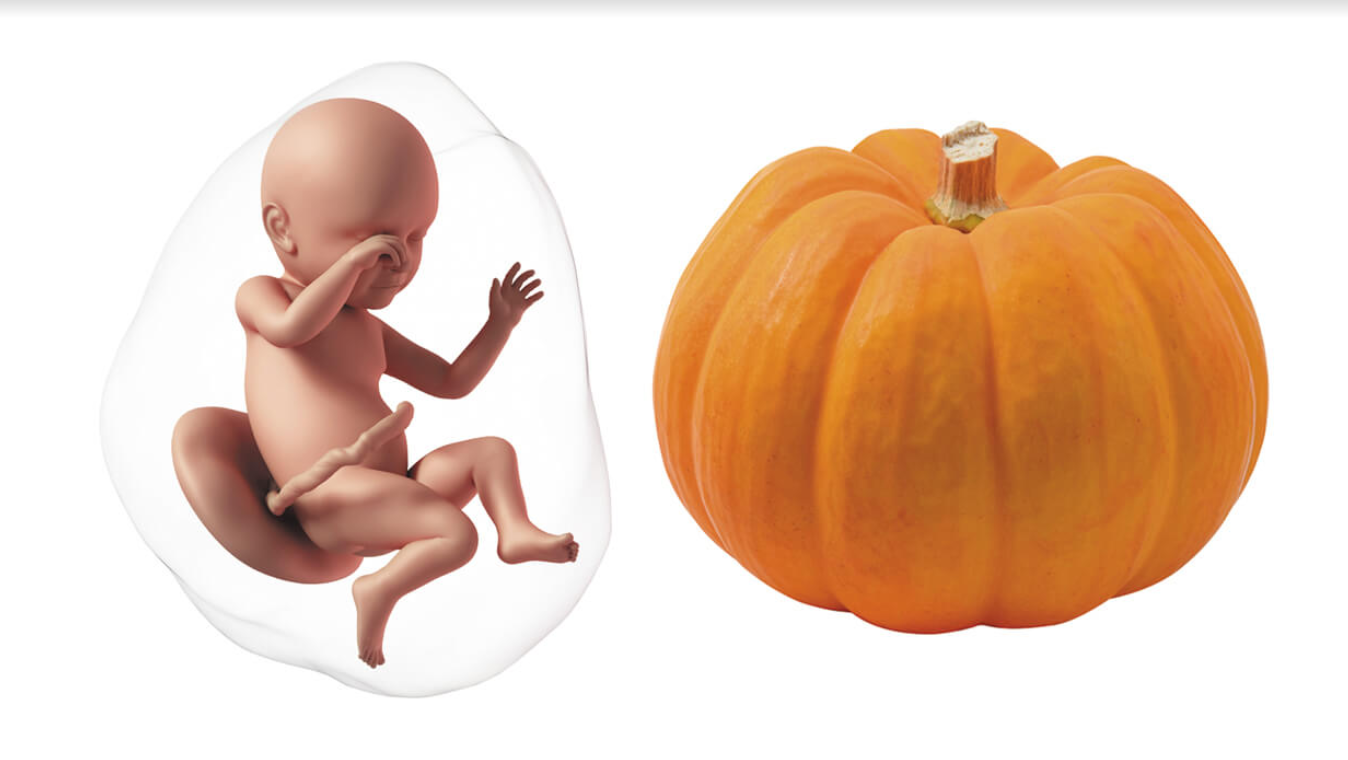
At 41 weeks pregnant, your baby is the size of a pumpkin.
At week 41 of pregnancy, you might be dying out of the desire to give birth and see your baby. But rest assured that plenty of moms-to-be go past their due date and everything turns out just fine.
Week 42
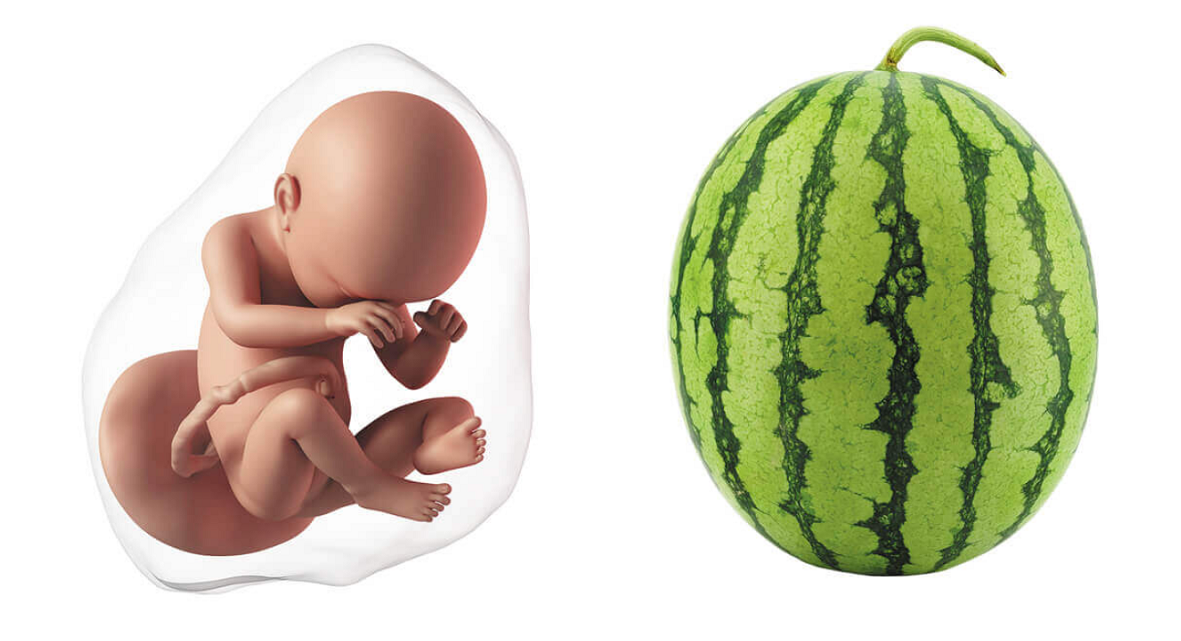
At 42 weeks pregnant, your baby is the size of a watermelon.
When a pregnancy lasts for 42 weeks or more it is referred to as a post-term pregnancy. While not many studies exist that prove why some women's pregnancy lasts for 42 weeks, medical experts believe that factors such as hormones, genetics, and even obesity can be the cause.
Take a quiz
Find out what you can do with our Health Assistant
- You can use our Due Date Calculator to predict your due date based on the first day of your last period.
- If you conceived through IVF, check out our IVF and FET Due Date Calculator.
Please note that Flo Health does not collect, process, or store the data that you enter while using these Tools. All calculations are done exclusively in your browser. Flo Health does not have access to the results. All data will be permanently erased after leaving or closing the page.
How to determine pregnancy due date using ultrasound results
Ultrasound (or sonogram) scans are totally painless and safe. They use high-frequency sound waves to get an image of the fetus to check fetal development and the progress of your pregnancy.
The ultrasound can detect the fetus's heartbeat around the 6th week, and this is one of the ways your health care provider can tell how far along you are in your pregnancy.
The first ultrasound, done between 10 and 14 weeks, is considered the most accurate method of estimating when you conceived.
To calculate your due date using the Flo calculator, follow these steps:
1. Insert the date when you had your ultrasound in the "Date of ultrasound" field.
2. Insert the week and day of your pregnancy that was estimated by the ultrasound — this is the gestational age of the fetus or how far you are in your pregnancy.
Now, the calculator will determine your due date by adding the remaining length of a typical pregnancy (in days) to how far along you are in your pregnancy (current gestational age).
3. Click the "Calculate my due date" button and check your results.
More About Due Date Calculations
The Rule of Eights: Due Date by last menstrual period or ultrasound?
You can calculate your due date by last menstrual period (LMP) or by ultrasound, and the two calculation results might be different. How do you determine which is more accurate?
To determine an accurate due date, you can use the "Rule of Eights."
1. Calculate the difference in due dates. First, determine the difference in days between the LMP and ultrasound due dates. Later, you'll compare that number to the margin of error, which is calculated by using the Rule of Eights.
2. Calculate the margin of error. The Rule of Eights is based on a pretty consistent 8 percent margin of error found at any gestational age (GA). You can use a simple formula to figure it out:
GA* x 0.08 (8%) = Margin of error
*GA in days as determined by your first ultrasound
3. Compare the results
Now compare the results from the previous two steps:
- If the margin of error is bigger than the difference in days between the due dates, use the LMP date as your due date.
- If the margin of error is smaller than the difference, use the ultrasound date as your due date.
Can your due date change?
Yes, your estimated due date can change, but it's nothing to worry about.
An estimated due date can change for several reasons. Your periods may have been irregular, the early ultrasound date could have been off, or perhaps the first ultrasound was performed in the second trimester.
Using a due date calculator can help you plan for the baby's arrival. Remember that the date can change as you get further along in your pregnancy depending on how your check-ups go. Using Flo's due date calculators can give you a rough idea of when you're likely to go into labor.
Notes:
LMP - Last Menstrual Period (the first day of your last period)
GA - Gestational Age (how many weeks and days pregnant you are)
If Ultrasound Due Date Is 3 Weeks Earlier Than Edd When Did Your Baby Come
Source: https://flo.health/tools/due-date-by-ultrasound
0 Response to "If Ultrasound Due Date Is 3 Weeks Earlier Than Edd When Did Your Baby Come"
Post a Comment